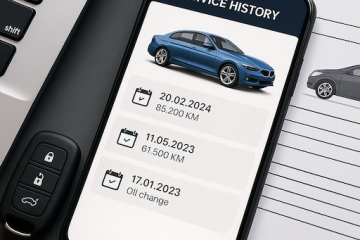Market Insight: Unlocking the Power of Automotive Data Fusion

In the modern automotive ecosystem, data is abundant—but often fragmented and lacking in completeness. Every touchpoint, from initial registration to the end of a vehicle’s life, generates critical information – and also requires it. Yet, the true value of that data only emerges when it’s brought together in a meaningful, structured way.
This is where automotive data fusion comes into play—and in this month’s Market Insight, CEO Mark Fretwell explains why it’s at the heart of the One Auto API philosophy.
Why Data Fusion Matters
No single dataset tells the whole story.
Auction results may provide insight into the wholesale value of a vehicle at a point in time, but could be heavily influenced by market factors such as supply and retail demand, along with an individual vehicles history and configured options. When data sources are taken in isolation, decision-making power is limited. Combined, they can unlock deeper insights and improve decision making.
Data fusion is the process of combining information from multiple sources to build a fuller, more reliable picture. One Auto API, makes this easier using our Common Data Dictionary (CDD)—a standardised structure that harmonises field names and semantics across data packages and providers. This reduces complexity, eliminates ambiguity, and accelerates data fusion for our clients.
Whether you’re building valuation and pricing models, underwriting risk, or powering AI-driven workflows, data quality and completeness are prerequisites for success.
Real-World Automotive Data Fusion: Identifying Write-Offs
One simple yet powerful example of data fusion is the combination of MIAFTR insurance write-off markers, with salvage auction data.
MIAFTR is used to identify vehicles that insurers have deemed uneconomical to repair. However, gaps and delays in adding markers are common. This creates risk—vehicles may be bought, repaired or sold-on before official write-off status is confirmed.
By fusing salvage auction data, the picture is enhanced allowing buyers to preemptively identify vehicles before they are added to MIAFTR—even before a vehicle has been sold, to solve the problem of missing or delayed markers. It also addresses gaps caused by insurers and fleets who don’t contribute to MIAFTR, and increases coverage to include vehicles sold as salvage due to failed or uneconomical repairs.
The automotive ecosystem has many examples of data fusion, from researchers combining open-source datasets to deliver new insights, to financiers combining asset and credit data in scorecards to support lending decisions.
Powering Successful Automotive Data Fusion
What sets One Auto API apart is not just the breadth of data available, but the way we make it easy to combine multiple data sources. Our common data dictionary removes the need for time-consuming data mapping, helping teams to generate trusted insights and build new features faster, allowing them innovate with confidence.
Saving time, and eliminating friction in the development process is just one part of the story. Users are able to access free implementation consultancy, allowing them to benefit from our understanding and experience of industry data sources – often saving many hours of frustration and wasted development effort.
Here to Help
If you need help driving data fusion or delivering new products and features, our expertise and unparalleled access to data will help you achieve speed-to-market, at a lower cost.
Book a free 30-minute consultation to see how we can work together to keep your business ahead of the curve.


